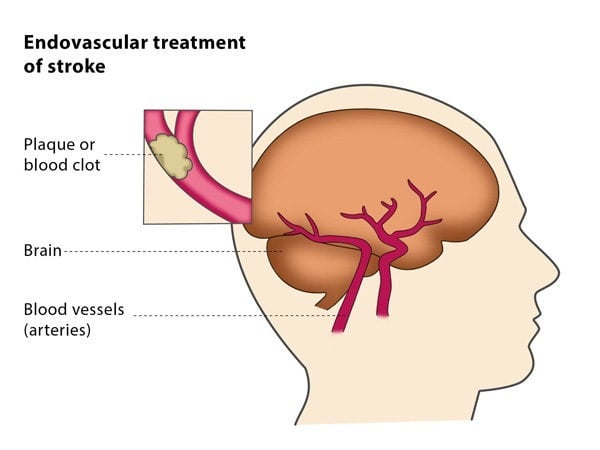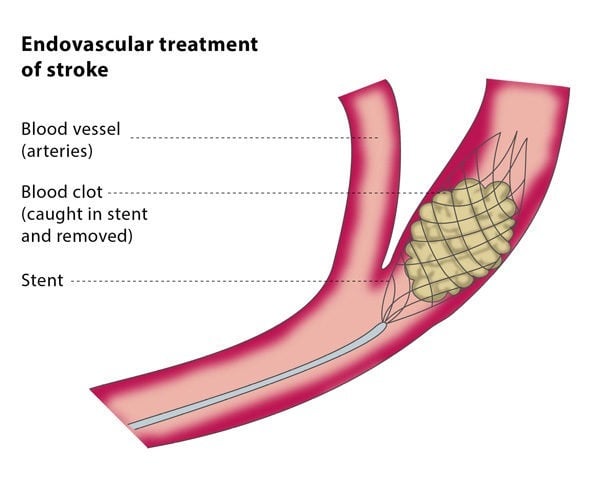Why perform it?
If you have suffered stroke caused by a blockage in a large artery but you are not suitable for or have not responded to thrombolysis, this procedure is a possible treatment for you. If performed within a safe period, the treatment helps the part of the brain tissue that is oxygen starved and not completely damaged to recover.
What are the risks?
The insertion of catheters and guidewires in arteries to the brain carries a low but definite risk of bleeding or the movement of blood clots to previously unaffected parts of the brain. Endovascular treatment is inadvisable if your admission to hospital after the stroke was delayed, as this carries a higher risk of complications.
Bibliography
1. Sacks D, Black CM, Cognard C, Connors JJ 3rd, Frei D, Gupta R, Jovin TG, Kluck B, Meyers PM, Murphy KJ, Ramee S, Rüfenacht DA, Bernadette Stallmeyer MJ, Vorwerk D. Multisociety consensus quality improvement guidelines for intraarterial catheter-directed treatment of acute ischemic stroke, from the American Society of Neuroradiology, Canadian Interventional Radiology Association, Cardiovascular and Interventional Radiological Society of Europe, Society for Cardiovascular Angiography and Interventions, Society of Interventional Radiology, Society of NeuroInterventional Surgery, European Society of Minimally Invasive Neurological Therapy, and Society of Vascular and Interventional Neurology. J Vasc Interv Radiol. 2013 Feb; 24(2):151-63.


